Paris Fashion: Couture Confidential
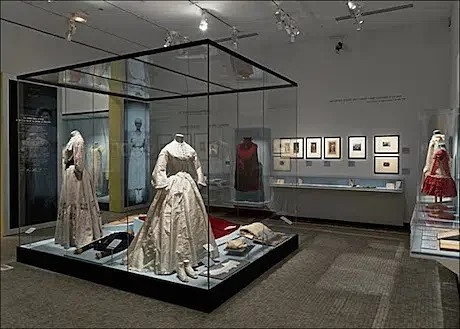
Thu 12 Dec 2013
A muse inspires and a model flatters. But no woman matters more to Paris fashion than the saleswoman or vendeuse. These elite employees are the direct links between customers and creator. A vendeuse has to personify style. But, unlike models or celebrities, she must also be discreet. Her job is to win her label faithful clients—and retain them. So she is persuasive, charismatic and chic.
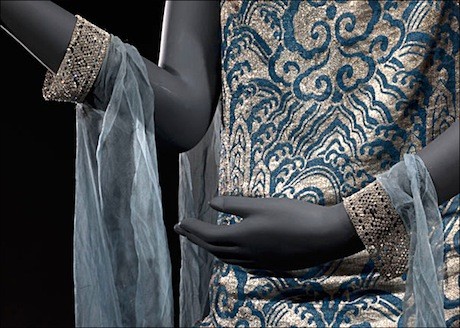
Photo: © Stéphane Piera/Galliera/ Roger-Viollet.
From 1902 through the late 1920s, this was the job of Parisienne Alice Alleaume. It was no accident; Alice was born to couture. Her mother had been a modiste (fine dressmaker) since the Second Empire, and both her older sisters were already vendeuses. The oldest, Hortense, worked at Worth—the house that was famous for having invented couture.
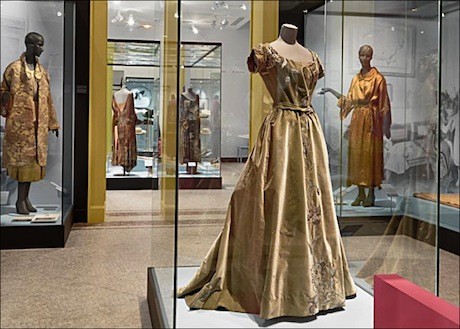
Photo: © Raphaël Chipault and Benjamin Soligny/Musée Galliera.
The story of this Paris fashion family is extraordinary, as is the new exhibition created to tell it. The Novel of A Wardrobe, at Musée Carnavalet, delivers just what it promises. A romance told by dresses, hats, shoes and jewels, it should appeal to girls of any age. The wardrobe at its center belonged to Alice Alleaume but those of her mother, sisters and daughter enhance it.
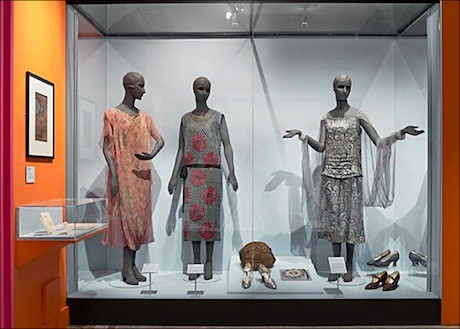
Photo: © Raphaël Chipault and Benjamin Soligny/Musée Galliera.
Just as fascinating are the artifacts, which include couture client books, notes from customers and photos of everyday life inside the fashion house. One even learns just how hard Alice trained for her job. In order to satisfy clients, for instance, she moved to London to master English. (The letters in which she practiced addressing fictitious customers highlight her struggles with its grammar and vocabulary.)
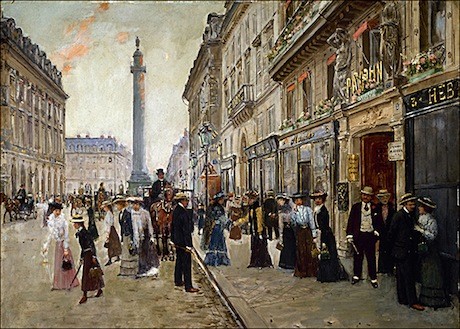
Workers leaving the couture house Paquin, rue de la Paix, circa 1902,
Jean Béraud. Photo: © Musée Carnavalet/Roger-Viollet.
Her work paid off; Alice became première vendeuse at the Place Vendôme house of Chéruit. Like Doucet or Callot Soeurs, this couture house ended up vanishing after the Wall Street crash. But since the exhibition had access to the dépôt de modèles, the archive where designs are recorded to counteract piracy, its style can live again for the show. In addition to Chéruit gowns worn by Alice, there are sketches and photos of more—complete with fabric samples.
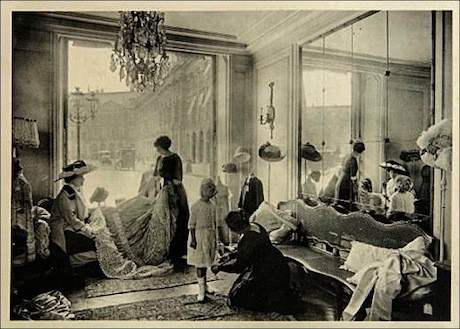
The salle de vente at Chéruit, where Alice worked, in 1910. Photo: © Edition
du Figaro/G.Agie/Gérard Leyris.
This lively show traces a full Parisian life. We see Alice as a young girl, an impressed baby sister, a socialite, a bride, a workingwoman and a mother. During the Jazz Age, she is fond of drinks and dancing (in delicate, shimmering gowns and wig-like caps covered in sculptural “curls”). When her daughter Ginette is born, Alice works to assemble the latest thing in children’s clothes.
Always she carefully chooses her styles, balancing modern day wear and sportswear with classic ensembles for night. Later, Alice became a huge fan of the movies (when she finally leaves couture it is to work in cinema). A conscientious promoter of Parisienne chic, her dress is never limited to the house she represents; the robes of Jeanne Lanvin become her actual favorites.

Photo: © Raphaël Chipault and Benjamin Soligny/Musée Galliera.
Displayed for the first time ever, these are real treasures of the Paris museum system. Included are items both from famous labels and legendary, long-gone maisons. In addition to Chéruit, Worth, Doucet and Lanvin, shown are evening shoes by Hellstern and hats by Alphonsine, Marcelle Demay, Madeleine Panizon and le Monnier. There is even headgear made at Rose Descat.
Like a peek at anyone’s wonderful wardrobe, it is delicious. But what makes it truly special? Alice had impeccable taste.
• Now at the Musée Carnavalet, The Novel of a Wardrobe: Parisienne Chic from the Belle Epoque to the 1930s runs through March 16.
Like this article? Sign up for our newsletter and get more of the latest scoop from Paris delivered directly to your in-box.
Related Links
The Novel of a Wardrobe
Musée Carnavalet
Chéruit